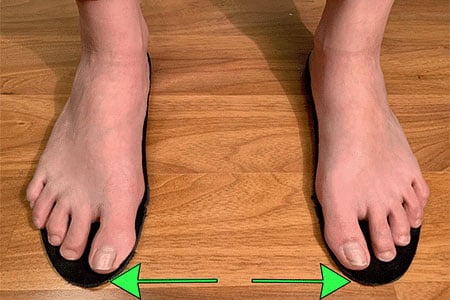5 Fitting Hacks for Kids’ Shoes that Will Save you Time and Money – Prepare to be Amazed!
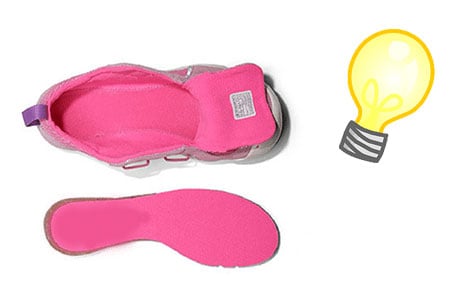
As a specialized shoe fitter in children’s shoes, I’ve encountered countless cases where simple adjustments make a world of difference. The right pair of shoes not only ensures comfort but also supports healthy foot development. As a passionate shoe fitter, I am going to share five fitting hacks that will help you save time and money. These hacks can help prolong the life of shoes that might otherwise be discarded due to fit issues.
Hack of How to Determine Shoe Size
One of the most common challenges parents face is determining the correct shoe size. For this reason, I created a virtual shoe fitting service that will help you retrieve your child’s shoe size from home. In that resource you will find out whether your child has narrow, medium, wide, or extra wide feet, and I also be able to determine whether your child has a high instep or not.
This virtual shoe fitting service provides an accurate representation of your child’s foot size, ensuring you select the right shoe, even when shopping online. It’s a reliable technique that can save you time and money by avoiding returns and exchanges.
Hacks for Shoes That Are Too Big
Children’s shoes that are too big can lead to tripping and discomfort.
- Adding a pair of insoles can be a game-changer for shoes that are slightly too big. Choose cushioned insoles that provide additional support and reduce the shoe’s internal space. They come in various thicknesses, allowing you to select the right level of padding for your child’s needs. This will raise your kids’ feet and fill any remaining gaps inside the shoes. The insole has to be placed on top of your child’s original insole.
- Fitting adhesive-backed pads that can fill gaps inside the shoes. Simply peel and stick the heel grips inside the shoes for an instant fix.
Shoe Slipping Off Heel Hack
It’s frustrating when shoes slip off a child’s heel, causing discomfort and potential falls. The heel is one of the most common places where children develop blisters, so it’s always wise to make sure that your child’s shoes don’t move excessively around that area.
- If your child is wearing shoes with shoelaces there is a specific shoe lacing technique that I learned that pushes the child’s feet back, securing the heels against the back part of the shoes. I learned this shoe lacing technique from my co-worker who has over 20 years of shoe fitting experience.
- If your child is wearing shoes with velcro closure then I suggest placing a tongue pad inside the shoes, which is going to push your kids’ feet back and secure them against the back part of the shoes. Tongue pads are basically adhesive-backed pads that work in all enclosed shoes. Simply peel and stick the heel grips inside the shoes for an instant fix.
Hack to Check for Growing Room Inside the Shoes
This is one of the shoe-fitting hacks that parents find most helpful. How many times have you wondered whether it’s time to buy your child a new pair of shoes or whether you can wait a little longer? By removing the original insoles of the shoes you can check whether your child can wear the shoes longer or not.
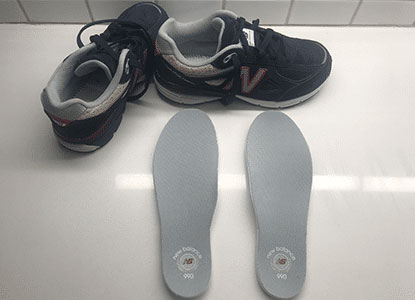

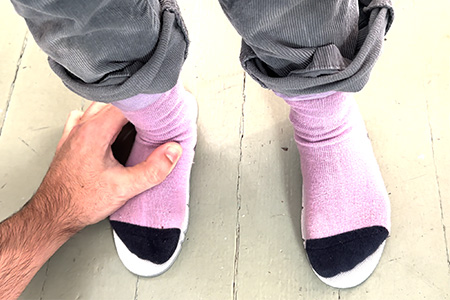
When you check for growing room make sure that you check your child’s longest toe, which doesn’t necessarily have to be the big toe, it can be the second or even the third toe.
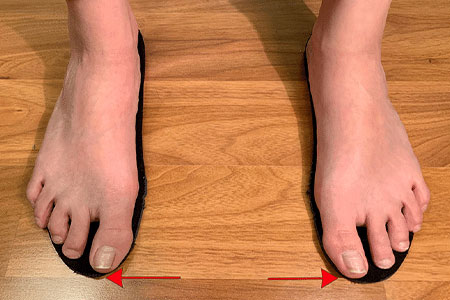
This simple test ensures that your child has the necessary room for natural foot growth without compromising on immediate comfort. Regular checks are crucial, as children’s feet can grow rapidly, sometimes even going up a half size every few months.
Hack to Check if Shoes Are Wide Enough
Foot width is just as important as length when it comes to fitting shoes. Sometimes your child might have the correct amount of space in the front of the shoes but the shoes might be too narrow, meaning that your child outgrew the width faster than the length.
With your child’s shoes on, slide your finger around the widest part of the shoes and make sure that you don’t feel a “bump” around that area. If you feel like something is pressing out then it means that your child’s small toe (pinky toe) is being pressed by the other toes against the side of the shoes.
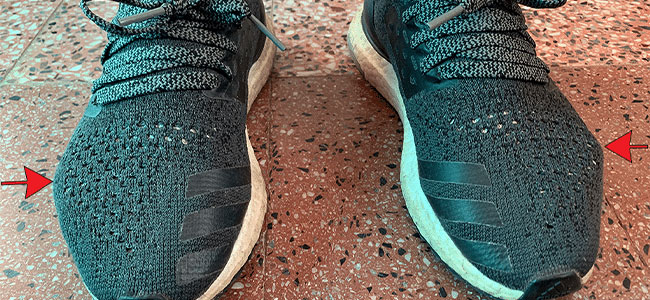
The red arrows are pointing at the specific part of the shoe that you need to check. Remember that if you feel a bump then it’s time to replace the shoes, even if your child still has room in the front part of the shoes.
My Experience as a Specialized Shoe Fitter
Having worked in a specialized children’s shoe store since 2013, I’ve seen firsthand the impact of correctly fitted shoes. Parents often come to me with concerns about foot conditions or complaints of discomfort, and it’s rewarding to guide them toward the right choices. Over the years, I’ve developed a keen eye for identifying subtle signs of poor fit and can offer solutions that balance both functionality and style.
Feel free to reach out with any questions or concerns. I’m here to help families find the correct pair of shoes for their children by offering personalized shoe recommendations.
Listen to Your Child’s Feedback
Children may not always articulate discomfort, but pay attention to any complaints about their shoes. Red marks or blisters are clear indicators of poor fit. It’s important to observe their behavior and body language, as reluctance to wear certain shoes can also signal issues.
Some shoe stores specialize in fitting children’s shoes and they do a great job making sure that the child walks out of the store with the correct pair of shoes in the correct shoe size. Unfortunately, most of these specialized shoe stores have been closing down. You can also ask any questions in the comments section below.


